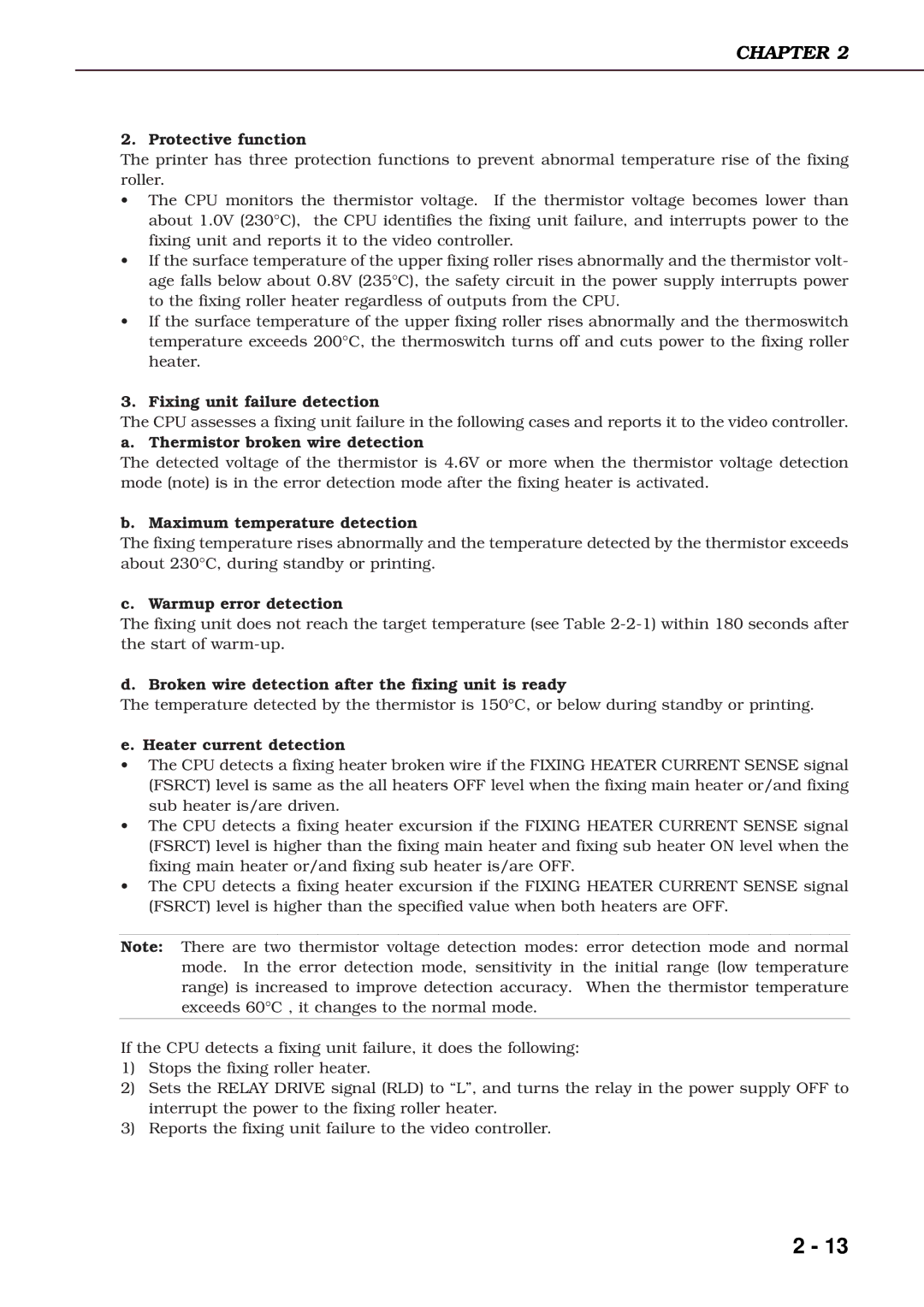
CHAPTER 2
2. Protective function
The printer has three protection functions to prevent abnormal temperature rise of the fixing roller.
•The CPU monitors the thermistor voltage. If the thermistor voltage becomes lower than about 1.0V (230°C), the CPU identifies the fixing unit failure, and interrupts power to the fixing unit and reports it to the video controller.
•If the surface temperature of the upper fixing roller rises abnormally and the thermistor volt- age falls below about 0.8V (235°C), the safety circuit in the power supply interrupts power to the fixing roller heater regardless of outputs from the CPU.
•If the surface temperature of the upper fixing roller rises abnormally and the thermoswitch temperature exceeds 200°C, the thermoswitch turns off and cuts power to the fixing roller heater.
3. Fixing unit failure detection
The CPU assesses a fixing unit failure in the following cases and reports it to the video controller.
a. Thermistor broken wire detection
The detected voltage of the thermistor is 4.6V or more when the thermistor voltage detection mode (note) is in the error detection mode after the fixing heater is activated.
b. Maximum temperature detection
The fixing temperature rises abnormally and the temperature detected by the thermistor exceeds about 230°C, during standby or printing.
c. Warmup error detection
The fixing unit does not reach the target temperature (see Table
d. Broken wire detection after the fixing unit is ready
The temperature detected by the thermistor is 150°C, or below during standby or printing.
e. Heater current detection
•The CPU detects a fixing heater broken wire if the FIXING HEATER CURRENT SENSE signal (FSRCT) level is same as the all heaters OFF level when the fixing main heater or/and fixing sub heater is/are driven.
•The CPU detects a fixing heater excursion if the FIXING HEATER CURRENT SENSE signal (FSRCT) level is higher than the fixing main heater and fixing sub heater ON level when the fixing main heater or/and fixing sub heater is/are OFF.
•The CPU detects a fixing heater excursion if the FIXING HEATER CURRENT SENSE signal (FSRCT) level is higher than the specified value when both heaters are OFF.
Note: There are two thermistor voltage detection modes: mode. In the error detection mode, sensitivity in range) is increased to improve detection accuracy. exceeds 60°C , it changes to the normal mode.
error detection mode and normal the initial range (low temperature When the thermistor temperature
If the CPU detects a fixing unit failure, it does the following:
1)Stops the fixing roller heater.
2)Sets the RELAY DRIVE signal (RLD) to “L”, and turns the relay in the power supply OFF to interrupt the power to the fixing roller heater.
3)Reports the fixing unit failure to the video controller.
2 - 13
